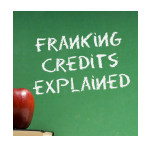
First Home Super Saver Scheme
Introduced as part of the 2017-2018 Federal Budget, the First Home Super Saver (FHSS) scheme aims to make housing more affordable for first home buyers. Essentially the FHSS scheme allows you to save money in your super fund that will go towards your first home.
 If you are making either concessional or non-concessional contributions into your super fund, you will be able to apply to have your voluntary contributions, as well as associated earnings, released to help you purchase your first home. Since your concessional contributions are taxed at 15% as opposed to your marginal tax rate, the FHSS scheme can be an effective tool in helping you save for your first home.
If you are making either concessional or non-concessional contributions into your super fund, you will be able to apply to have your voluntary contributions, as well as associated earnings, released to help you purchase your first home. Since your concessional contributions are taxed at 15% as opposed to your marginal tax rate, the FHSS scheme can be an effective tool in helping you save for your first home.
When making a withdrawal from super to help purchase a home, you are able to withdraw total voluntary contributions of up to a maximum of $30,000 across all years, with a maximum of $15,000 from any one financial year. The contributions are ordered by a first-in first-out approach. For example, Joe has made $10,000 of eligible non-concessional contributions each of the past 3 financial years. He finds a house he would like to buy. He can withdraw a total of $30,000 to purchase the house as each year he has stayed within the maximum of $15,000 per year. If Joe had made eligible non-concessional contributions of $20,000 and $10,000 in the past 2 financial years, he would be limited to only withdrawing $25,000 (maximum of $15,000 from the first year and $10,000 from the second year).
Once your first FHSS amount has been released to you, within 12 months you must do one of the following:
– Sign a contract to purchase or construct your home – you must notify the ATO within 28 days of signing the contract
– Re-contribute the assessable FHSS amount (less tax withheld) into your super fund and notify the ATO within 12 months of the first FHSS amount being released to you.
There is a strict set of criteria you must satisfy in order to be eligible for the FHSS:
– You must be at least 18 years old when you request a release from your super account
– You must never have owned property in Australia (this includes investment property, vacant land, commercial property, a lease of land in Australia or a company title interest in land in Australia).
– You must not have previously requested the Commissioner of Taxation in Australia to issue a FHSS release authority in relation to the scheme.
You may be eligible for the FHSS even if you do not satisfy the above conditions. More details of this can be found here.
There is also criteria on what you cannot purchase through the FHSS and these include:
– Any premises not capable of being occupied as a residence
– A houseboat
– A motorhome
– Vacant Land
One thing to note is that just because it can be done, doesn’t mean that every super fund offers it so if you believe you are eligible and would like to explore it further, it would be worthwhile contacting JBS.












